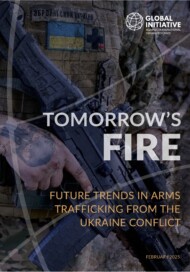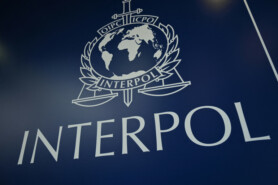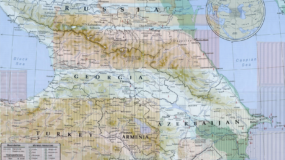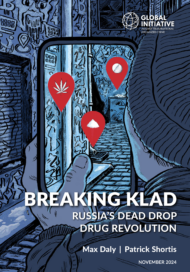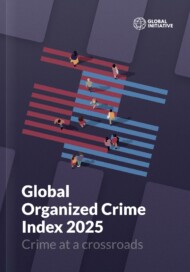Posted on 18 Feb 2025
Given recent announcements, the end game of the Ukraine conflict may be approaching sooner than expected. The pace of negotiations may bring a rapid end to the fighting, but early indications suggest they will leave many underlying issues unresolved. What this means for organized crime, and specifically the smuggling of weapons and ammunition into Europe is unclear, but by using scenario modelling we can divine insights and provide concrete recommendations.
On 20–21 January 2025, the GI-TOC hosted a conference in Brussels to discuss three potential trajectories of the Russo-Ukrainian conflict and the ramifications of each on arms trafficking dynamics in Europe.
The conference gamed three scenarios – a peace agreement, a stalemate conflict and a decisive victory for Ukraine or Russia. Participants were asked to respond, from the perspective of organized crime, law enforcement and multilateral policymakers, to emergent arms trafficking dynamics, working through various turns to discover second- and third-order implications. Asking participants to step outside their role and think like a criminal is rewarding and illuminates the discussion, while building trust and personal connections.
The purpose of this exercise was to provide policymakers with a forward-looking perspective that would map the potential risk of arms trafficking across a range of situations, point up gaps in responses and develop specific and measurable policy response options for national authorities to implement with the aim of reducing the risks of illicit firearms markets in Europe from the conflict.
Fostering international cooperation and information-sharing was also a primary goal of the conference. More than 60 high-level stakeholders attended from a range of organizations focusing on arms trafficking.
Understanding the risk
Understanding of the risks of arms trafficking arising from the conflict has improved since the Russian invasion in February 2022. Countries are closely monitoring the supply and movement of Western weapons and ‘trophy’ battlefield weapons, assessing civilian attitudes to gun ownership, and working closely with Ukrainian authorities to combat the immediate threats. Yet recent research suggests criminal groups are establishing more organized arms trafficking markets, routes and supply chains, and the scale of the problem is much larger than past occurrences of large-scale diversion, such as the Balkans and Afghanistan. Experts and policymakers in neighbouring and other European countries continue to express their concerns about the threat of large-scale diversion of small arms and light weapons (SALW) and ammunition from Ukraine. The exercise identified the following key pathways to mitigate these risks:
Plan for uncertainty
Each scenario had many layers of complexity, and it was challenging to discern credible deductions and formulate concrete policy responses. The potential activities of organized criminal groups in responding to the scenarios were numerous. An overarching conclusion was that policy responses must flexible and scalable from the start.
Use lessons learned (and learn new ones)
The conference highlighted the fact that many policy bodies in Europe have a deep and multilayered understanding of the legacy of the Balkans conflict on arms trafficking trends in Europe. While Ukraine has already benefited from a preventative approach informed by that experience, more can be done to apply the lessons learnt from old conflicts and adapt to the new illicit firearm types, such as converted blank guns, reactivated firearms and 3D-printed guns. The criminal groups are innovating rapidly.
Crime has time
Time was deemed a critical factor in the scenarios. Organized criminals are likely to be the fastest movers in any scenario, but they have also built resilient networks over a long period. Mitigating risks from illicit arms trafficking will require immediate, short-term responses and long-term durable solutions.
Realism, not over-reaction
Managing expectations and avoiding knee-jerk reactions is of critical importance. Some leakage must be expected, and understanding this reality should persuade policymakers to act sooner rather than wait for a trigger event in a European city.
Key points
- Draft, support and implement policy measures that reduce arms trafficking risks in Ukraine, including (when it is formulated) Ukraine’s demobilization law, and its security sector reform and veteran policy.
- Improve Europe-wide operational capabilities in terms of information sharing, coordination and access to data.
- The arms trafficking trade is likely to be multifaceted: a small-scale trade to European organized crime, and a larger volume trade to other regions (Africa, Latin America, Middle East, Central Asia), potentially to conflict actors.
- ‘Traditional’ organized crime may be involved in arms trafficking alongside other more lucrative activities, like the drug trade, but ex-military personnel may form a new class of ‘brokers’, using connections with other military and politicians to set up larger-scale operations.
- Tailor responses that recognize demand is king: the right kit for the right customer. Criminals in Europe prefer handguns and explosives, while heavier weaponry, such as assault rifles, machine guns and RPGs, may be sent to other markets. These preferences will shape the development of the post-conflict illicit arms market.
- Türkiye may become a key hub for the arms trade, due to the prevalence of transnational organized crime, logistics links and strong smuggling capacity.
- It will be critical to think imaginatively about the Russian dimension of the arms trafficking risk. Better identify the risks in Russia (and beyond), which could act as a back door for weapons entering Europe.
